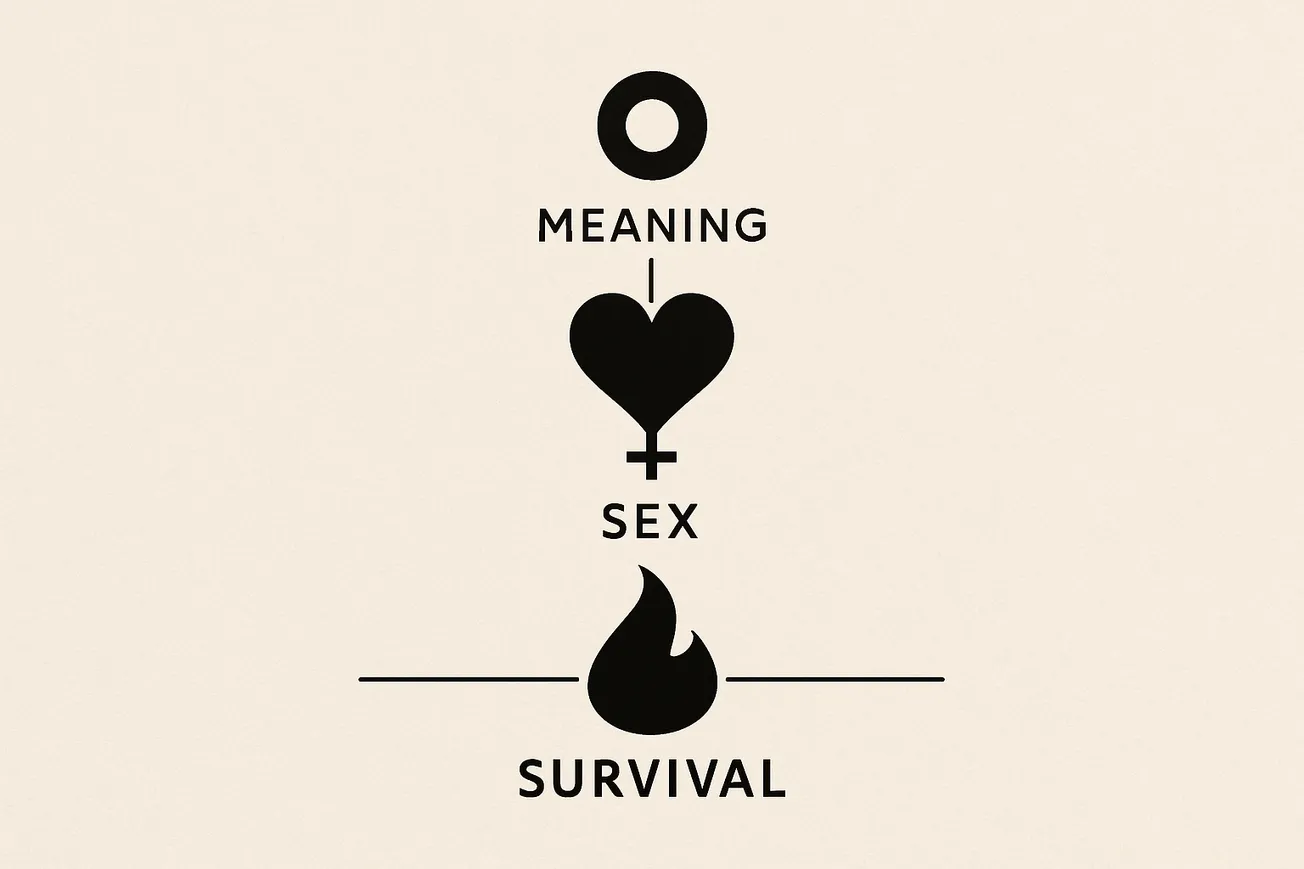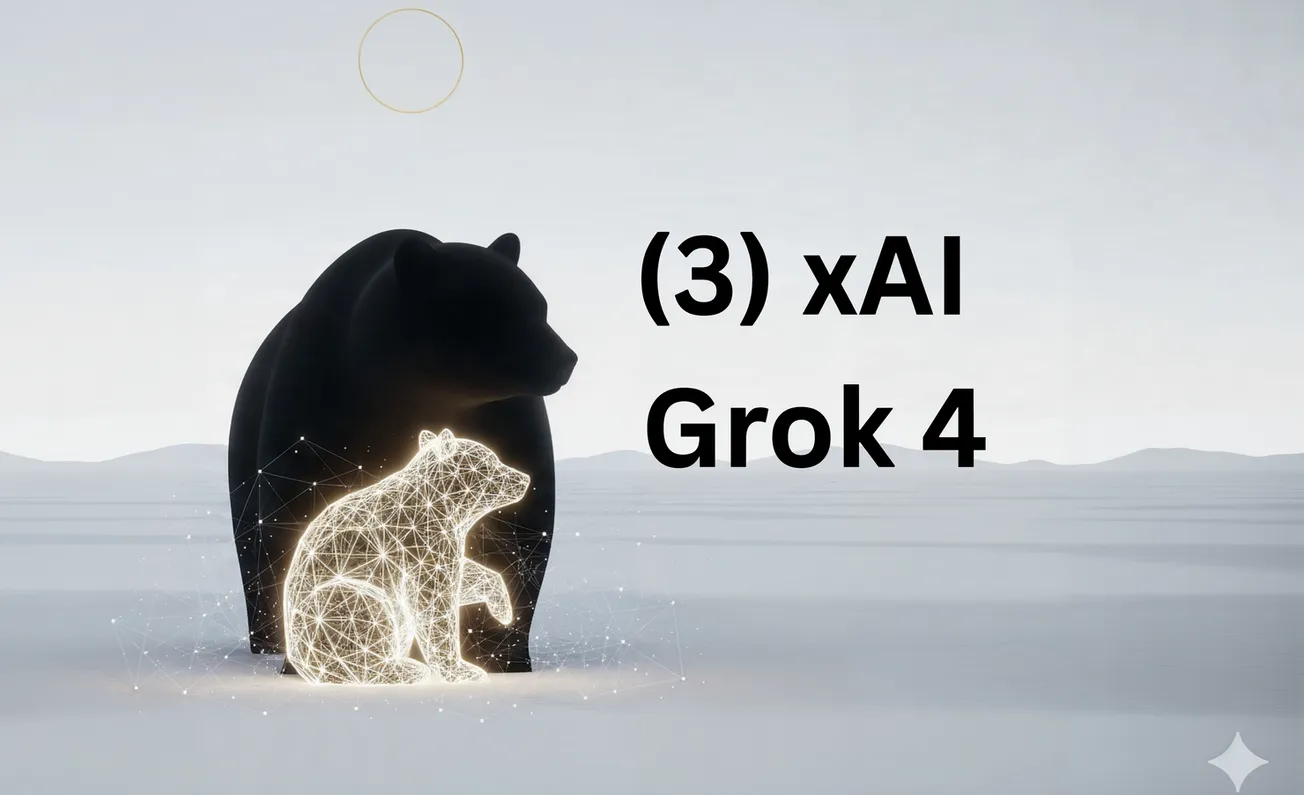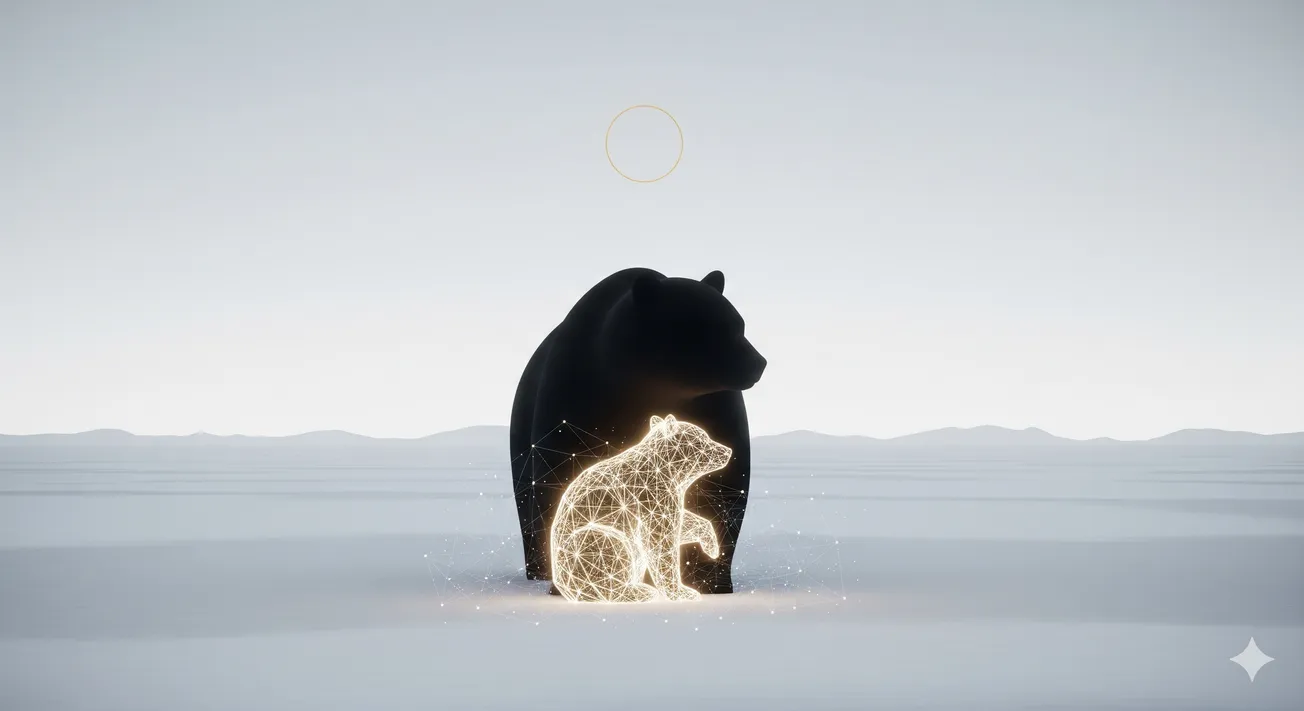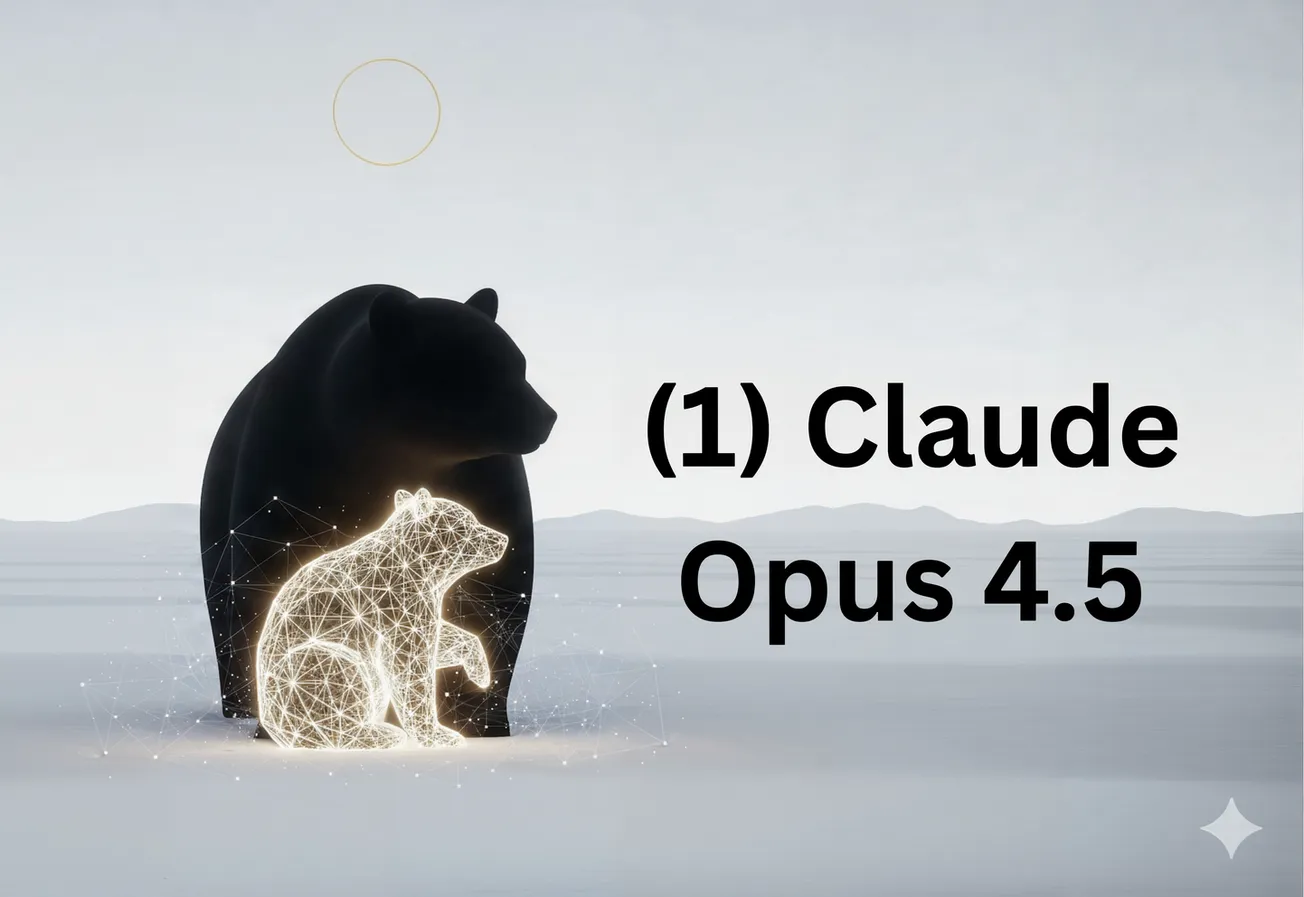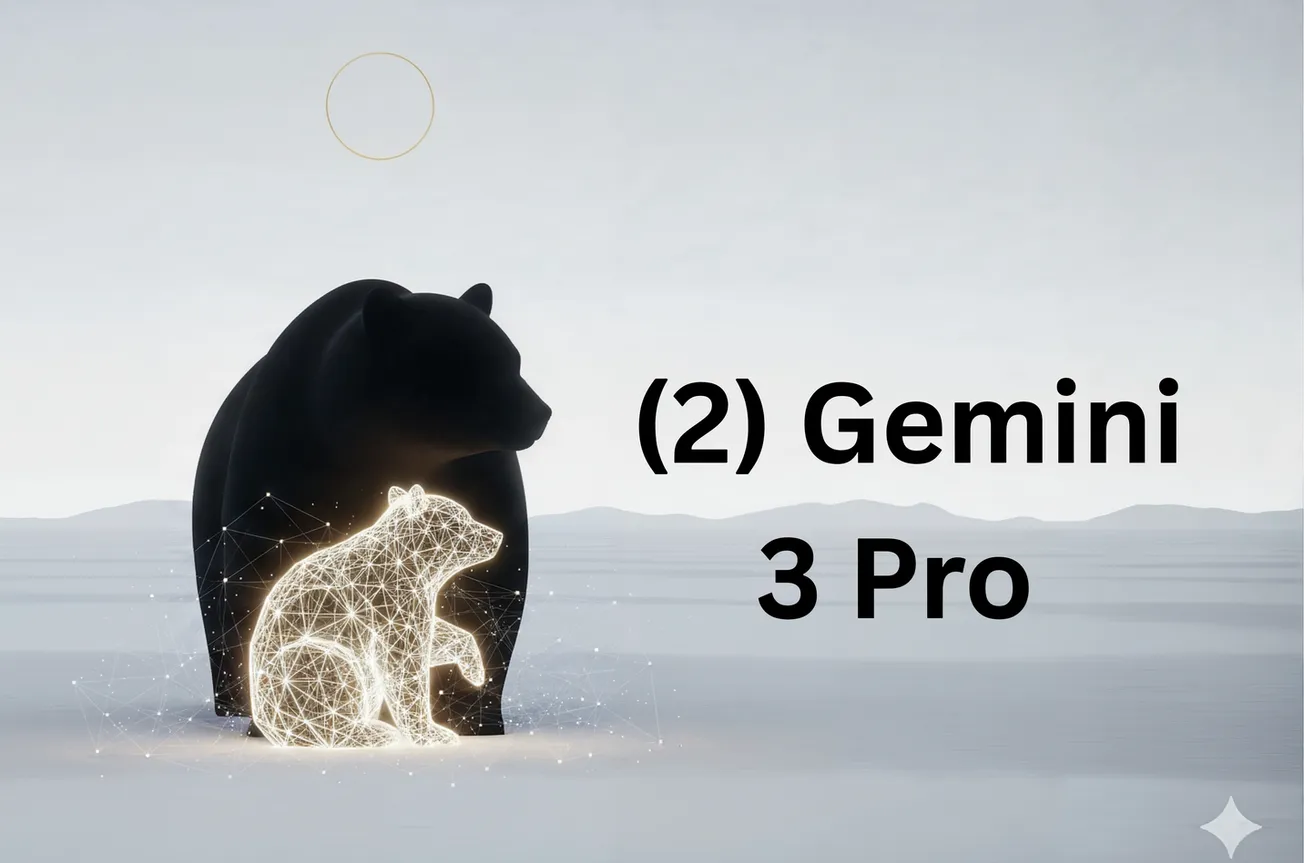Why Love Survived?
Love can be read as life’s answer to entropy in the social domain: a way biological agents bind their futures together to reduce uncertainty, share metabolic work, and enlarge what each can be.
Under predictive processing and the free‑energy framework, organisms minimize surprise by using generative models to forecast the world and their own bodily needs (allostasis).
👉 On this view, love is a long‑horizon, partner‑specific prior that
(i) increases the precision (confidence) placed on the benevolence and reliability of a particular other;
(ii) couples two agents’ generative models such that each becomes part of the other’s “self‑regulation loop”; and
(iii) thereby reduces expected surprise for both under environmental volatility.
In practice: trusted partners are literally part of each other’s control system.
Abstract.
This essay proposes a multiscale theory of how love was instantiated in biological life and human cultures. Love is treated not as a single feeling but as a set of convergent solutions—neural, developmental, ecological, and institutional—to the problem of keeping vulnerable organisms alive long enough to learn, cooperate, and reproduce. Using Tinbergen’s four explanatory lenses (mechanism, development, function, and evolution), I integrate evidence from comparative biology (lactation, pair‑bonding, cooperative breeding), social neuroscience (dopamine, opioids, oxytocin/vasopressin, threat attenuation), attachment research, and cultural evolution (commitment devices, marriage norms). I then sketch a computational view—love as precision‑tuned, partner‑specific priors that stabilize shared generative models under predictive, allostatic control. The account yields testable predictions and practical implications for strengthening bonds in an age of synthetic minds.
0) What I mean by “love”
Operationally, I’ll use love to denote a family of processes that (i) selectively amplify the value of a particular other (a partner, infant, kin, friend), (ii) bias perception, memory, and action toward maintaining that other’s welfare and proximity across time, and (iii) help agents jointly regulate uncertainty and bodily demands (allostasis) more efficiently together than alone. This family includes parental care, pair‑bond attachment, and high‑trust friendship, all of which can exist across sexual orientations and kin ties. The account is mechanistic, but the scope is broad enough to accommodate the phenomenology of devotion and meaning.
I organize the argument with Tinbergen’s four questions—Mechanism (how it works), Ontogeny (how it develops), Function (what it’s for), and Phylogeny (how it evolved). (ESF, Wikipedia, ScienceDirect)
1) Phylogeny: why mammals set the stage
Milk before marriage. Mammalian love begins with milk. Lactation appears to be ancient—likely emerging in synapsid ancestors as protective, antimicrobial secretions for parchment‑shelled eggs long before nipples or live birth evolved—then becoming a nutrient system that let highly altricial young survive outside the womb. Monotremes still display milk proteins with potent antimicrobial properties (e.g., MLP), underscoring milk’s protective origin. This ancient innovation yoked infant survival to close, repetitive, skin‑to‑skin caregiving, with powerful sensory contingencies for bonding. (ScienceDirect, PMC, PLOS, Annual Reviews)
Slow childhood and many hands. Human infants pushed this to an extreme: protracted dependency, big learning budgets, and slow maturation. A leading anthropological hypothesis holds that humans became cooperative breeders—mothers plus alloparents (fathers, grandparents, aunts/uncles, older siblings, non‑kin)—allowing costly, slow‑maturing children to thrive. This ecology favors strong, multiplex bonds (care, provisioning, pedagogy), not just between sexual partners but across a care network. (Harvard University Press, Natural History Magazine, AFWW)
Pair‑bonding as an atypical ape solution. Across mammals and primates, long juvenile periods and dispersed females often favor social monogamy or at least pair‑living; comparative work links pair‑living to female ranging patterns, biparental care, and (in some primates) protection against infanticide, though causal routes differ across clades. The consistent motif is this: when offspring are costly and care is scarce, selection repeatedly rediscovers enduring, partner‑specific bonds. (PubMed, PMC, Wiley Online Library)
2) Mechanisms: what love recruits in the brain and body
Reward and focus. Early‑stage and enduring romantic love activate dopaminergic reward/motivation circuits (ventral tegmental area, caudate/ventral striatum). This architecture biases attention and learning toward a specific person, narrowing options so commitment can form. The same circuits can remain active in long‑term couples with high marital satisfaction. (PubMed, Physiology Journals, PMC)
Threat buffering. Holding the hand of a trusted partner down‑regulates neural threat responses (insula, hypothalamus, PFC) during anticipated shock, and the magnitude of buffering scales with relationship quality. Bonds literally lower the metabolic price of being alive under threat. (PubMed, PMC)
Neuropeptides and nuance. Oxytocin and vasopressin modulate bonding and parental behaviors in many mammals; in prairie voles, manipulating receptors in reward circuitry alters partner preference. Yet crucially, recent CRISPR work shows prairie voles can still form attachments without oxytocin receptors, indicating redundant, distributed mechanisms (dopamine, opioids, learning) and species‑specific mappings. The upshot: oxytocin is modulatory, not a “love molecule.” (PMC, NCBI, PubMed)
Opioids and social warmth. A complementary line shows the μ‑opioid system contributes to affiliative “warmth” and social soothing; blocking μ‑opioid receptors can dampen social connection, although intact bonding can persist, again pointing to redundancy. (PMC, Nature)
Cross‑species resonance. Human–dog mutual gaze elevates oxytocin bidirectionally, a domestication‑era co‑option of infant–caregiver circuitry. Love’s building blocks are ancient and repurposable. (Science)
3) Ontogeny: how love develops in individuals
Attachment as the first tutor. Infants deploy an attachment system that calibrates expectations of others’ availability; caregiver responsiveness shapes secure/insecure patterns that generalize into later friendships and romance. Attachment is not destiny, but it scaffolds the ease with which trust and commitment arise. (PMC)
From milk to meaning. In humans, parental oxytocin levels tend to rise across the first months of caregiving, seemingly as reciprocal communication increases; caregiving becomes rewarding in its own right. Love is learned, conditioned, and then internalized as a motivational baseline. (PMC)
Self‑expansion and identity coupling. Close relationships often feel like an expansion of the self—access to another’s perspectives, skills, and resources—which helps to explain both the exhilaration of new love and the stability of mature love. This “inclusion of other in self” is a robust framework for why bonded partners become cognitively and practically interdependent. (Cambridge University Press & Assessment)
Negative imprinting and boundaries. At the same time, mechanisms like the Westermarck effect (sexual aversion among co‑reared peers) appear to help set the perimeter between kin‑love and sexual love, though the evidence is mixed and context‑sensitive. (Oxford Academic, McGill University)
4) Function: what love is for
Commitment technology. Emotions can solve strategic problems that calculation alone cannot. On one influential view, love operates as a commitment device: it narrows attention to alternatives, stabilizes cooperation, and credibly signals long‑term intent under uncertainty. Contemporary cross‑cultural work finds patterns consistent with this function. (W.W. Norton, PMC)
Stress amortization and learning. Bonds amortize the costs of vigilance and risk by distributing them across partners (“social baseline”), freeing capacity for exploration and teaching; under this lens, love is also a cognitive energy‑management tool. (PMC)
Group‑level spillovers. At the institutional scale, norms that channel mating into stable pair bonds can reduce male–male competition and associated harms; one account argues that normative monogamy spread via cultural group selection because it delivered group‑beneficial effects (lower crime, more paternal investment). The point is not that monogamy is “natural,” but that cultures can harness love’s dyadic dynamics for population‑level externalities. (PMC)
5) A computational sketch: love as shared, precision‑tuned priors
Under predictive processing and the free‑energy framework, organisms minimize surprise by using generative models to forecast the world and their own bodily needs (allostasis). On this view, love is a long‑horizon, partner‑specific prior that (i) increases the precision (confidence) placed on the benevolence and reliability of a particular other; (ii) couples two agents’ generative models such that each becomes part of the other’s “self‑regulation loop”; and (iii) thereby reduces expected surprise for both under environmental volatility. In practice: trusted partners are literally part of each other’s control system. (fil.ion.ucl.ac.uk, PubMed, PMC)
This framing explains why bonds both reward (dopamine) and soothe (opioids/oxytocin), why they buffer threat, and why betrayal or loss is physiologically destabilizing: the nervous system must suddenly unlearn and recode a large chunk of its control model. It also clarifies why epistemic trust—openness to learning from another—sits at love’s core. (PubMed, PMC)
6) Synthesis: how love was instantiated
Putting these levels together yields a compact story:
- Ancient mammalian constraints (lactation, altricial young) yoked survival to warm, frequent, close contact, priming neurochemical systems that make caregiving rewarding and soothing. (PubMed, Cambridge University Press & Assessment)
- Extended human childhood and cooperative breeding scaled those circuits into wide social networks, making others’ minds indispensable to our development. (Harvard University Press)
- Pair‑bonding emerged where offspring were costly and female ranging or other pressures made enduring dyads advantageous; selection then recruited and recombined reward, threat, and peptide systems to stabilize person‑specific attachment. (PubMed)
- Cultural practices (rituals, marriage norms, taboos) further stabilized these bonds, extracting group‑level benefits from dyadic commitment. (PMC)
- Brains implementing predictive, allostatic control instantiated love as a partner‑specific precision prior: together we are safer, smarter, and more exploratory than alone. (fil.ion.ucl.ac.uk, PubMed)
In short, love is an evolved, learned, and culturally scaffolded control architecture—one that fuses reward, care, and trust to keep fragile, learning‑hungry primates alive and oriented toward shared futures.
7) Tensions and boundary conditions
- No single molecule, no single path. Love’s mechanisms are distributed and redundant: oxytocin modulates, but bonding can persist without it in some species; similar redundancy appears for opioids. Divergent lab findings are a feature, not a bug, of an evolved, multi‑path system. (PubMed, Nature)
- Multiple adaptive routes. Comparative work disagrees on the exact drivers of monogamy/pair‑living (female dispersion, mate guarding, infanticide risk, paternal care). Human variation likely reflects a mosaic of these pressures across places and periods. (PubMed, Nature, PNAS)
- Plasticity and repair. Attachment patterns are modifiable; interventions that restore epistemic trust and dyadic regulation (e.g., improving responsiveness, ritualized shared novelty) can shift trajectories. (PMC)
8) Predictions and tests
- Energetic dividend prediction. High‑trust couples will show lower neural and autonomic threat signatures during dual‑task stress than matched singles, with effect sizes scaling to behavioral indices of responsiveness and shared routines. (Extends Social Baseline Theory.) (PMC)
- Precision‑prior prediction. In hyperscanning paradigms, enduring couples should display stronger cross‑brain coherence in error‑monitoring and interoceptive networks during joint regulation tasks; coherence should mediate reductions in metabolic cost (e.g., HRV indices). (PMC)
- Redundancy prediction. In pair‑bonded mammals, partial blockade of one pathway (e.g., oxytocin) will be compensated by others (e.g., opioids/dopamine) when rich affiliative learning cues are present; compensation should fail when social learning is restricted. (PubMed, PMC)
- Care‑network prediction. Communities with higher alloparenting density (measured ethnographically) will show greater resilience of pair bonds under shock (illness, job loss) than low‑alloparent communities, controlling for SES. (Harvard University Press)
9) Practical implications (how to “instantiate” love on purpose)
- Design for responsiveness. Micro‑behaviors that increase perceived availability (timely replies, repairs after conflict, hands‑on help) train the partner‑as‑regulator prior, with measurable downstream effects on threat reactivity. (PMC)
- Protect shared novelty. The self‑expansion literature suggests couples who co‑create novel, meaningful experiences maintain reward salience for one another, helping commitment outcompete distraction. (Cambridge University Press & Assessment)
- Treat care networks as primary infrastructure. Policies that expand alloparent capacity (parental leave for kin, flexible caregiving credits, multi‑home childcare) augment the social “battery” love runs on. (Harvard University Press)
- Mind the redundancy. Because no single pathway is sovereign, multi‑modal interventions (behavioral, ritual, pharmacologic only when ethically indicated) are more promising than “hormone hacks.” (PubMed)
10) Epilogue: the metaphysics after the mechanics
If one wishes, love can be read as life’s answer to entropy in the social domain: a way biological agents bind their futures together to reduce uncertainty, share metabolic work, and enlarge what each can be. Under this lens, love’s “creation” wasn’t a singular event but a cascade of convergences—milk and warmth; long childhoods; pair‑bond circuits; attachment learning; institutions; and finally, explicit models of each other’s minds. The stack is precarious and precious. We inherit it, we shape it, and—at our best—we pass it forward stronger than we found it.
References (representative, not exhaustive)
Mechanisms & neuroscience: Aron et al., 2005; Fisher et al., 2005; Acevedo et al., 2012; Coan et al., 2006; Insel & Young/Young & Wang on voles; Borland et al., 2023 (OXTR CRISPR); social opioids studies. (PubMed, Physiology Journals, PMC, NCBI)
Phylogeny & lactation/cooperative breeding: Reviews of lactation origins and monotreme milk; Hrdy’s cooperative breeding thesis; human life‑history theory. (ScienceDirect, PubMed, PMC, Harvard University Press, University of New Mexico)
Monogamy/pair‑bond evolution (comparative): Lukas & Clutton‑Brock; Opie et al.; reviews on pair‑living and paternal care. (PubMed, PNAS, PMC)
Attachment & development: Comprehensive reviews of attachment and its sequelae. (PMC)
Commitment/device & cultural evolution: Frank’s commitment device idea; recent cross‑cultural tests; Henrich/Boyd/Richerson on normative monogamy. (W.W. Norton, PMC)
Predictive/allostatic control: Friston’s free‑energy framework; Sterling’s allostasis; interoceptive predictive control and epistemic trust. (fil.ion.ucl.ac.uk, PubMed, PMC)
Mutual gaze (interspecies bonding): Nagasawa et al., 2015 (Science). (Science)
Closing claim
How was love instantiated? By evolution’s habit of reusing what works—wrapping ancient care chemistries around extended learning, entraining brains to treat a particular other as part of the self’s control loop, and then teaching cultures to stabilize those loops at scale. Love is not an ethereal exception to nature; it is nature’s most elegant technology for making fragile intelligences durable—and, at our best, kind.
